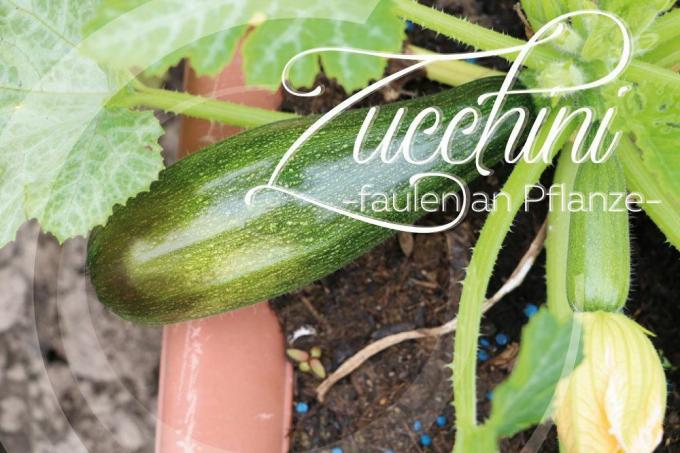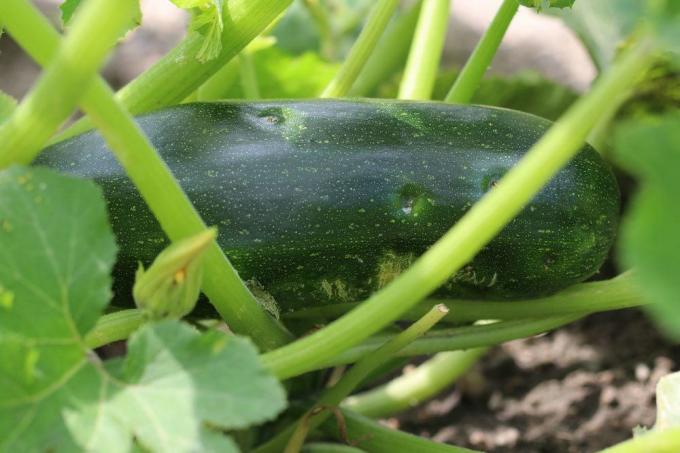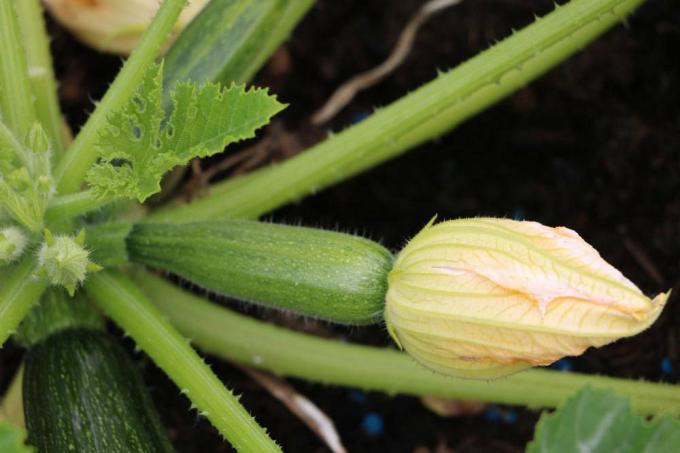
table of contents
- causes
- prevention
- weather
- Soil quality
- Assistance measures
Zucchini are one of the most popular vegetable plants in the hobby garden. Not only do they look impressive, they are also versatile. It is all the more annoying when the zucchini start to rot from the top. But don't worry, there are a few tricks you can use to save the zucchini harvest, even in this case.
causes
Causes of Putrefaction
The rotten or the death of zucchini from the top is a phenomenon that does not occur every year, but from certain weather conditions and afterwards Soil conditions depends. So you can be spared from rot for years until it suddenly appears out of nowhere.
Common causes are:
- insufficient or poor pollination
- Calcium deficiency
- too much fertilizer
- excessive heat (over 30 degrees Celsius)
- too little sun
- Waterlogging in the ground
- poor ventilation of the soil
- too cold weather
- wet and cold weather
- excessive temperature fluctuations between day and night
- too many fruits on one plant (partial death)

prevention
Preventive measures
So that the tips of the young zucchini fruits do not start to rot in the first place, you can take various preventive measures that can prevent the rot. There is of course no guarantee of success, but the chances are relatively good that the plants will not rot.
weather
"Fighting" the weather
Well, there is little you can do about the weather outdoors. Unfortunately, you don't know in advance how the weather will develop during the zucchini's growth phase. Nevertheless, even in this case you can, if only a little, influence.
Pay attention to the Choice of location for zucchini, ensure that the plants get plenty of sun. In regions where the temperatures remain cooler even in summer, choose a protected location for the plants, for example in front of wooden fences or (house) walls. This is how the heat is given off to the plants. This sheltered location also helps the plants when the temperatures fluctuate greatly between day and night.
Against too high Temperatures helps shade. Natural shade providers, such as deciduous trees, protect the zucchini from excessive heat, as they give off water vapor. When choosing this location, however, you should make sure that the plants also get enough sun. Against too much rain a protective roof helps. However, this should not rest on the plants. It is best to leave a distance of 20 to 30 centimeters between the rain cover and the plant. Is the rainy season or after the continuous rain, you can remove the roof again.
Soil quality
One cause of the fruit's rottenness from the top is the bottom. Therefore, you should prepare it according to the needs of the plants. A good Ventilation of the soil can be achieved by loosening the soil before planting the zucchini. You can also add compost to the soil at the same time so that the plants are well supplied with nutrients. If you are unsure about the quality of your soil, you should take a soil sample and analyze it.

Tip: In this case, it is not advisable to use artificial fertilizers, as you will ultimately want to consume the fruit.
This also helps to a certain extent against waterlogging Loosen up of the soil. However, even in very well loosened soil, the water can no longer drain away at some point. The only thing that helps is a rain canopy that is installed in good time.
Assistance measures
Help for zucchini plants
If some young zucchini have already started to rot from the tip, they can no longer be saved. But you can save the other fruits from this fate. That Lazy Nowadays it is no longer classified as a disease of the plants, but as a deficiency symptom, more precisely a deficiency in calcium. This deficiency is due to the fact that many soils are over-fertilized and contain too much ammonium, potassium and magnesium. These substances prevent the plants from absorbing calcium and then putrefaction occurs from the top.

That is why the plant must be supplied with lime, i.e. calcium. As a good one Calcium fertilizer A mixture of rock flour and dolomite lime has proven itself. Mix a mixture in the ratio 50:50 and sprinkle 1.5 teaspoons for each plant. After that you have to wait, because the plant has to absorb the calcium first. After a few days or For two weeks there should be no more rotten spots on the tip.

